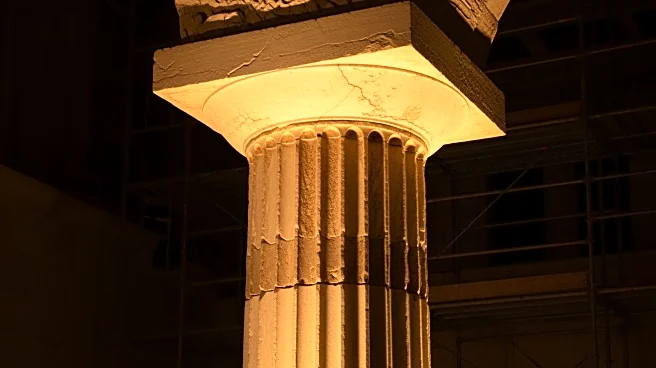What's Happening?
The Parthenon in Athens briefly shed its scaffolding, offering a rare unobstructed view of the ancient temple. This development marks a significant moment in the ongoing restoration efforts that have been
underway since 1975. The scaffolding was removed for approximately four weeks, allowing residents and visitors to appreciate the temple's grandeur without the usual metal supports. Culture Minister Lina Mendoni described the sight as 'breathtaking,' noting the temple's almost new appearance despite its age of nearly 2,500 years. The restoration process has involved a team of 161 specialized staff, including engineers, archaeologists, and marble craftsmen, who have been working to preserve the Parthenon's historical integrity. The restoration aims to stabilize the structure rather than recreate its original form, using Pentelic marble from the original quarry area to replace missing parts.
Why It's Important?
The restoration of the Parthenon is crucial for preserving a significant cultural and historical landmark that symbolizes Greece's Golden Age. The temple's conservation not only maintains its structural integrity but also enhances its appeal as a major tourist attraction, drawing millions of visitors annually. The restoration efforts reflect a commitment to preserving cultural heritage, which is vital for educational purposes and for fostering a sense of identity and continuity. The project also highlights the advancements in restoration techniques, such as the use of titanium fasteners designed to last for centuries, ensuring the Parthenon's longevity for future generations.
What's Next?
The current phase of restoration is expected to conclude in 2026, marking the final stage before the Parthenon is completely freed from scaffolding. This milestone will allow for a more permanent unobstructed view of the temple, enhancing its status as a cultural and historical icon. The ongoing restoration efforts will continue to focus on stabilizing the structure and preserving as much authentic material as possible, ensuring the Parthenon's legacy endures.












